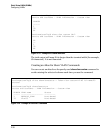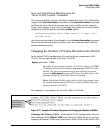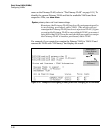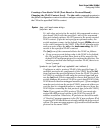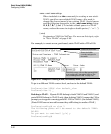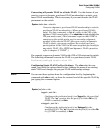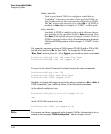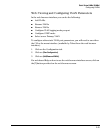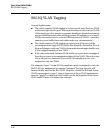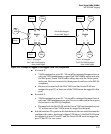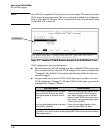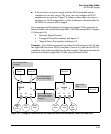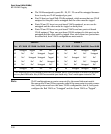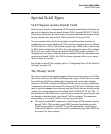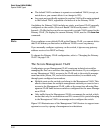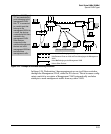
Static Virtual LANs (VLANs)
802.1Q VLAN Tagging
802.1Q VLAN Tagging
General Applications:
■ The switch requires VLAN tagging on a given port if more than one VLAN
of the same type uses the port. When a port belongs to two or more VLANs
of the same type, they remain as separate broadcast domains and cannot
receive traffic from each other without routing. (If multiple, non-routable
VLANs exist in the switch—such as NETbeui protocol VLANs— then they
cannot receive traffic from each other under any circumstances.)
■ The switch requires VLAN tagging on a given port if the port will be
receiving inbound, tagged VLAN traffic that should be forwarded. Even if
the port belongs to only one VLAN, it forwards inbound tagged traffic only
if it is a tagged member of that VLAN.
■ If the only authorized, inbound VLAN traffic on a port arrives untagged,
then the port must be an untagged member of that VLAN. This is the case
where the port is connected to a non 802.1Q-compliant device or is
assigned to only one VLAN.
For example, if port 7 on an 802.1Q-compliant switch is assigned to only the
Red VLAN, the assignment can remain “untagged” because the port will
forward traffic only for the Red VLAN. However, if both the Red and Green
VLANs are assigned to port 7, then at least one of those VLAN assignments
must be “tagged” so that Red VLAN traffic can be distinguished from Green
VLAN traffic. Figure 2-30 shows this concept:
2-46



